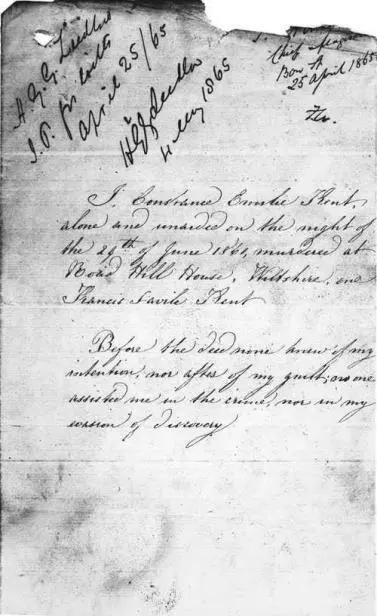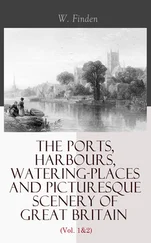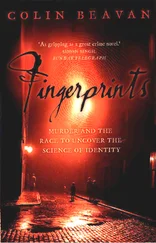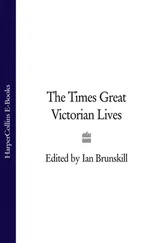In London, Jack Whicher's life had emptied out. There was little sign of the former 'prince of detectives' in the newspapers. His friend Detective-Inspector Stephen Thornton dropped dead of apoplexy at his house in Lambeth in September 1861, aged fifty-eight, leaving the way clear for Dolly Williamson to be promoted Inspector in October. Williamson was put in charge of the department.
After Kingswood, Whicher only once appears in the Metropolitan Police files on important cases. In September 1862 he and a colleague, Superintendent Walker, were sent to Warsaw at the request of the Russian rulers of the city to give advice on how to set up a detective service. The Russians were worried about the Polish nationalist insurgents, who had made assassination attempts on the Tsar's family. 'Everything seems very quiet,' the English officers reported from the Hotel Europe on 8 September, 'and no further attempts at assassination have been made, altho' . . . the government seems to be in constant apprehension. Our mission here is being kept entirely secret . . . as our personal safety might be endangered by a wrong construction being placed on the object of our visit.' Afterwards the Russians were polite about their guests - 'the two Officers . . . have entirely satisfied his Highness's expectations by the justice and sagacity of their remarks' - but did not take up their suggestions. In March 1863, when Russian soldiers were shooting insurgents in Warsaw, questions were asked in the House of Commons about the ethics of the detectives' secret mission.
On 18 March 1864 Jack Whicher left the Metropolitan Police, aged forty-nine, with an annual pension of PS133.6 s .8 d . He returned to his rooms in Holywell Street, Pimlico. On his discharge papers he described his marital state as single and his next of kin as William Wort, a Wiltshire coach proprietor who in 1860 had married one of the detective's nieces, Mary Ann. The discharge papers gave the reason for Whicher's early retirement as 'congestion of the brain'. This diagnosis was applied to all sorts of conditions, such as epilepsy, anxiety, vascular dementia. An essay of 1866 described the symptoms as throbbing headaches, a flushed, swollen face and bloodshot eyes, and argued that its cause was 'protracted mental tension'. It was as if Whicher's thoughts had run too obsessively on the conundrum of the Road Hill murder and his mind had become as 'over-heated' as Robert Audley's. Perhaps congestion of the brain was what happened when the detective instinct went unanswered, when the hunger for resolution was not satisfied, when the truth could not be disentangled from the seeming.
'Nothing in the world is hidden for ever,' wrote Wilkie Collins in No Name (1862). 'Sand turns traitor, and betrays the footstep that has passed over it; water gives back to the tell-tale surface the body that has been drowned . . . Hate breaks its prison-secrecy in the thoughts, through the doorway of the eyes . . . Look where we will, the inevitable law of revelation is one of the laws of nature: the lasting preservation of a secret is a miracle which the world has never yet seen.'

CHAPTER SIXTEEN
BETTER SHE BE MAD
April-June 1865
On Tuesday, 25 April 1865 Constance Kent, now twenty-one, took the train from Brighton to Victoria station, under a fierce sun, and then a cab to Bow Street magistrates' court, Covent Garden. She was accompanied by the Reverend Wagner, in his vicar's garb, and by Katharine Gream, the Lady Superior of St Mary's, in full regalia (a long black cloak with a high white frill). Constance wore a loose veil. She appeared 'pale and sorrowful', said the Daily Telegraph , 'but perfectly composed'. When she reached the court shortly before four o'clock, she told the officials inside that she had come to confess to a murder.
The Bow Street office, the first and most famous of the London magistrates' courts, occupied two stucco-fronted terrace houses in the disreputable district around Covent Garden market and the opera house. A policeman stood guard outside, under a gaslamp and a carving of the royal arms. Constance and her companions were shown down a narrow passage to a single-storey courtroom behind the main building. The room was criss-crossed with metal railings and wooden platforms; the sun shone through a skylight in the ceiling; a clock and several oil paintings hung on the discoloured walls. Sir Thomas Henry, the chief magistrate of Bow Street, was sitting at the Bench. Constance handed him the letter that she had brought with her. She took a seat. The room, on an April day as hot as midsummer, was close and airless.
Henry read the letter, written on silky notepaper in a confident, flowery hand:
I, Constance Emilie Kent, alone and unaided, on the night of the 29th of June, 1860, murdered at Road-hill-house, Wiltshire, one Francis Saville Kent. Before the deed was done no one knew of my intention, nor afterwards of my guilt. No one assisted me in the crime, nor in the evasion of discovery.
The magistrate looked at Constance. 'Am I to understand, Miss Kent,' he asked, 'that you have given yourself up of your own free act and will on this charge?'
'Yes, sir.' Constance spoke 'firmly, though sadly', said The Times .
'Anything you may say here will be written down, and may be used against you. Do you quite understand that?'
'Yes, sir.'
'Is this paper, now produced before me, in your own handwriting, and written of your own free will?'
'It is, sir.'
'Then let the charge be entered in her own words.' The magistrates' clerk wrote down the murder charge on a blue form, asking Constance only whether she spelt her middle name 'Emily' or 'Emilie'.
'It is quite indifferent,' she replied. 'I sometimes spell it one way, and sometimes the other.'
'I observe that on this paper, which you say is your own handwriting, it is spelt 'Emilie".'
'Yes, sir.'
Henry asked her if she would sign her confession. 'I must again remind you,' he added, 'that it is the most serious crime that can be committed, and that your statement will be used against you at your trial. I have had the words written copied upon this charge sheet, but I do not wish you to sign it unless you desire to do so.'
'I will do so if necessary,' said Constance.
'It is not absolutely necessary,' Henry told her. 'There is no occasion for you to sign the charge unless you wish it. I will have your statement attached to the depositions, and I will again ask you if you have made it by your own desire, and without any inducement from any quarter whatever to give yourself up.'
'Yes.'
Henry turned his attention to the Reverend Wagner, and asked him to identify himself. Wagner was a well-known figure, an Eton-and Oxford-educated curate who had used his inherited riches to build five churches in Brighton, for which he commissioned ornate windows and altar-pieces from artists such as Edward Burne-Jones, Augustus Pugin and William Morris. He established the seaside town as a centre of the Anglo-Catholic movement. Some considered him a papist, and a danger to the English Church.
'I am a clerk in holy orders and perpetual curate of St Paul's Church, Brighton,' said Wagner. The vicar had a handsome, fleshy face, inset with small, appraising eyes. 'I have known Constance Kent nearly two years - since the summer of 1863.'
Constance interrupted: 'In August.'
'About twenty-one months?' asked Henry.
'Yes,' said Wagner. 'As far as I can remember an English family wrote to me, asking for her admission to St Mary's . . . in consequence of her having no home, or of some difficulty respecting her. The "home", or rather "hospital", as it is now called, is a house for religious ladies, and is attached to St Mary's Church. She came about that time as a visitor, and has been there up to the present day.'
Читать дальше













